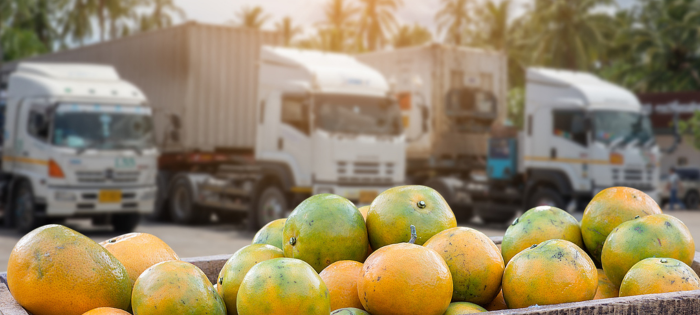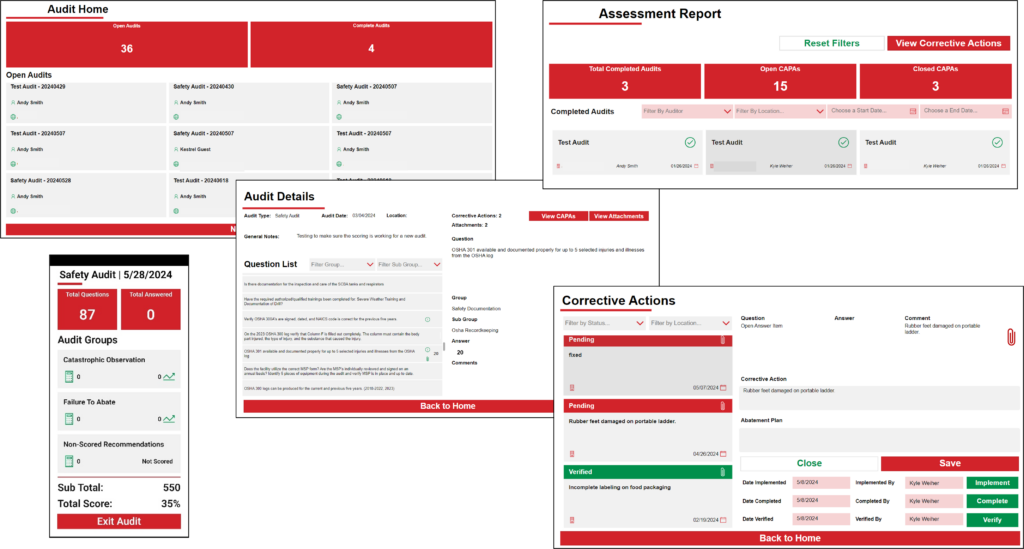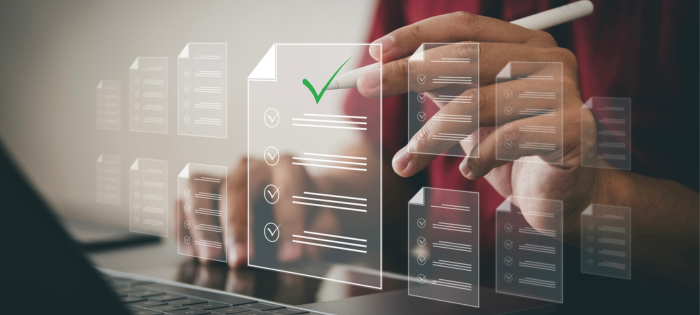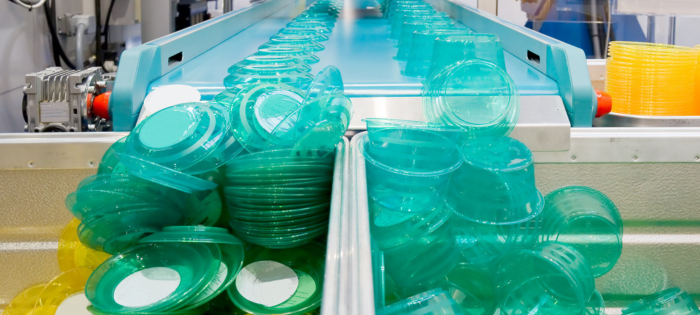
Comments: No Comments
2024 Safety Observations: Putting Safety First
The Occupational Safety and Health (OSH) Act of 1970 was enacted due to the rising concerns over the high rates of workplace injuries, illness, and fatalities in the United States. Prior to the OSH Act, industrial accidents were common. Reports of hazardous working conditions, coupled with the lack of comprehensive federal safety regulations, highlighted the need for a unified approach to workplace safety. During the 1960s, public and labor organizations further demanded better worker protection. The OSH Act was published to address these issues by establishing consistent safety standards, ensuring safer working environments, and reducing the risk of occupational injuries and deaths.
Since the early days of the OSH Act, occupational safety and health has evolved from being a regulatory obligation to being a core component of how successful companies are run. According to the Occupational Safety and Health Administration (OSHA), having a strong safety and health program can help create:
- Fewer accidents, losses, and disruptions by preventing workplace injuries and illnesses.
- Engaged employees and improved morale.
- Increased productivity and enhanced overall business operations.
- Lower workers’ compensation and insurance claims.
- Improved compliance with OSHA regulations.
- Improved reputation to attract new customers and employees and retain existing ones.
- Better brand and shareholder value that tie to social responsibility.
National Health and Safety Observations
Every year, the National Safety Council (NSC), National Institute for Occupational Safety and Health (NIOSH), and OSHA bring additional attention to occupational safety and health issues to help reinforce the importance of having a strong safety culture and to encourage employers and individuals to recommit to working and living safely.
Every June, NSC and NIOSH observe National Safety Month to encourage employers and individuals alike to be safety role models. This year’s focus areas include safety engagement; roadway safety; risk, reduction; and slips, trips, and falls.
Much like National Safety Month, OSHA’s Safe + Sound Week (August 12-18, 2024) is a nationwide event held each August that recognizes the successes of workplace health and safety programs and offers information and ideas on how to keep America’s workers safe. This year’s Safe + Sound Week is focused on providing resources for businesses to conduct Job Hazard Analyses (JHAs).
KTL’s Series on Investing in Safety
Throughout OSHA’s Safe + Sound Week this August, KTL will be featuring a series of articles and posts on our blog and social media (i.e., Facebook, LinkedIn, X) reinforcing these concepts from OSHA, NSC, and NIOSH and discussing why businesses should invest in safety. Topics will include the following:
- Workers’ rights
- Protecting temporary workers
- Psychological safety at work
- Food chemical safety
- Effective safety leadership
Watch for these articles! For more information on what your organization can do to participate and promote a strong safety culture, visit the websites for OSHA Safe + Sound Week and NSC National Safety Month.

Tech Corner: Property Management Tool
Functionality: What does it do?
As an organization operates more sites/facilities/properties, the need for a reliable tool to manage them becomes more critical. KTL’s Property Management Tool is designed to help users manage and organize property-related documents and information (e.g., contracts, permits, maps, insurance, other legal information) more efficiently. The tool allows users to:
- Maintain detailed information for each property, including property name, address, county, previous owner, date added, insurance carrier, and description.
- Search for properties using a search bar or by selecting alphabetic filters. Once a property is selected, detailed information about the property (as described above) is displayed.
- Associate related documents to each property. This may include contracts, maps, permits, and other legal documents. Each document entry shows the property name, modification date, document type, and document library location.
- Easily navigate between properties, refresh the view, open comment logs, and select properties for further actions.
Benefits: Why do you need it?
KTL’s Property Management App provides the following:
- Enhanced efficiency: Streamlines property management tasks, reducing the time and effort required to access and manage property information.
- Centralized documentation: Keeps all property-related documents in one place, simplifying retrieval and reducing the likelihood of misfiled documents.
- Improved decision-making: Provides immediate access to comprehensive property details, aiding in quicker and more informed decision-making.
- Scalability: Adapts to growing organizational needs and expanding property portfolios.
Technology Used
- Power Apps: Utilizes Microsoft Power Apps to create a flexible and scalable application that integrates seamlessly with other Microsoft services.
- SharePoint: Leverages Microsoft’s robust cloud infrastructure for secure data storage and efficient data management.

Comments: No Comments
Produce Traceability: Uncovering the Gaps in Your Program
The produce industry handles an estimated six billion cases of produce in the U.S. each year. Because a significant portion of this produce travels through the supply chain to reach customers, many produce companies already have some level of traceability program in place. With the finalization of the Food and Drug Administration’s (FDA) Food Traceability Rule, the question is whether these existing traceability programs, systems, and procedures meet regulatory requirements.
KTL’s recent article in Food Safety Tech walks you through how to conduct a gap assessment to determine what requirements your existing programs already meet and identify where improvements are needed to comply with the final Food Traceability Rule by the January 2026 deadline.

Tech Corner: Audit Tool
Functionality: What does it do?
Audits provide an essential tool for improving and verifying compliance performance. Audits may be used to capture regulatory compliance status (e.g., EPA, FDA, USDA, OSHA); certification system conformance (e.g., ISO, GFSI); and adequacy of internal controls, potential risks, and best practices. KTL’s Audit Tool allows organizations to conduct and manage audits. The interface provides a clear overview of completed audits, displays open and closed corrective and preventive actions (CAPAs), and enables detailed filtering to streamline the management process.
Benefits: Why do you need it?
KTL’s Audit Tool allows users to capture regulatory compliance status and certification system conformance. It ensures that audit processes are tailored and responsive by allowing the user to:
- Add new locations and active users; create and modify assessment types; and adjust question templates, scoring values, and answer options.
- Create custom audit templates by selecting the questions to be included in each audit.
- Track audit progress/completion status by subject.
- Quickly gauge the volume of completed assessments and the number of CAPAs that have been successfully resolved and closed.
Technology Used
- Dataverse
- Power Apps


Comments: No Comments
Updates to OSHA’s Hazard Communication Standard
In February 2021, the Occupational Safety and Health Administration (OSHA) proposed to modify the Hazard Communication Standard (HCS) to maintain conformity with the United Nations (UN) Globally Harmonized System of Classification and Labeling Chemicals (GHS) Revision 7, align certain provisions with Canadian and other U.S. agencies, and address issues with the 2012 HCS. Five years later, the final rule to update the HCS was published on May 24, 2024, and will take effect July 19, 2024.
HCS and GHS
The HCS was adopted by OSHA in 1983 to create a standardized approach for communicating about workplace hazards associated with hazardous chemical exposures. The standard requires chemical manufacturers and importers to classify the hazards of chemicals produced and/or imported to the U.S. and to communicate to employees about these chemicals through a Hazard Communication Program, which includes labels and other forms of warning, safety data sheets (SDS), and training. All employers with hazardous chemicals in the workplace must also have a Hazard Communication Program in place to inform employees about these hazards and protective measures.
Like the HCS, the GHS is an international standard that was created as a “universally harmonized approach” to classify chemicals and communicate hazard information. Warning pictograms that can be understood in any language are a key component of the GHS, in addition to universal standards for hazard testing criteria and SDSs. The UN updates the GHS every two years, with the most recent updates in 2023 with Revision 10.
Major Changes
OSHA’s recent HCS updates are the Administration’s first since 2012. The modifications are intended to:
- Improve hazard communication (e.g., precautionary statements) so employees are more aware of the hazards associated with potential chemical exposure and understand how to safely handle, store, and dispose of hazardous chemicals.
- Create a clearer hazard classification process to provide more complete hazard information on SDSs and labels.
- Incorporate new hazard classes and categories.
- Improve clarity and flexibility in requirements (e.g., small packages, packages released for shipment).
The table below highlights some of the updated HCS’s key changes.
| Area | Provision |
| Small package labeling | Provides special labeling alternatives for small containers when it is not feasible to use traditional labels containing full information: * Containers < 100 ml capacity: Use just the product identifier, pictogram, signal word, chemical manufacturer’s name/phone number, and statement that full information is provided on the immediate outer package. * < 3 ml capacity: Only the product identifier needs to be displayed. |
| Trade secret concentration ranges | Allows use of prescribed concentration ranges when exact percentages or ranges are claimed as a trade secret. |
| Health hazards | Updates the skin corrosion/irritation and serious eye damage/eye irritation chapters; adds non-animal testing methods. |
| Physical hazards | Expands physical hazards to include new hazard categories for flammable gases, desensitized explosives, and aerosols. |
| Label elements | Aligns with Revision 7 and includes new or updated hazards, updated guidance, and precautionary statements. |
| SDS | Revises Sections 2 (hazard identification), 3 (composition/information on ingredients), 9 (physical and chemical properties), and 11 (toxicological information). |
| Hazard classification | Clarifies which hazards must be evaluated and the hazard information required on the label vs. the SDS. |
| Packages released for shipment | Allows packages that have been released for shipment to not be relabeled. |
| Bulk shipment | Increases coordination with Department of Transportation (DOT), including allowing labels to be included on immediate containers or with shipping papers, bills of landing (BOLs), or other electronic means that are immediately available to workers on the receiving end of the shipment. |
| New definitions | Provides definitions for the following key terms: bulk shipment, combustible dust, gas, immediate outer package, liquid, physician or other licensed health care professional (PLHCP), released for shipment, solid. |
Compliance Dates
OSHA is taking a phased approach to implementation and compliance with the HCS based on whether the organization handles chemical substances or mixtures. During the transition period between July 19, 2024 (effective date) and the dates below, facilities may either comply with the updated HCS, the 2012 version, or both.
| Date | Requirement | Party | |
| Chemical Substances | July 19, 2026 | Update labels and SDSs | Chemical manufacturers, importers, distributors |
| January 20, 2027 | Update workplace labels, hazard communication program, and training | Employers | |
| Mixtures | July 19, 2027 | Update labels and SDSs | Chemical manufacturers, importers, distributors |
| January 20, 2028 | Update workplace labels, hazard communication program, and training | Employers |
Next Steps
While many of OSHA’s changes will provide additional flexibility to chemical manufacturers and importers, as well as alignment with GHS and international trading partners, the regulatory burden is not insignificant to those impacted. The fundamental structure of the HCS is not changing; however, the revisions will require companies to update SDSs, labels, and training. All of this will take appropriate and resources to meet deadlines. KTL can assist with creating plans and schedules for making these updates to help ensure your facility is ready by the applicable compliance date(s).

Comments: No Comments
Produce Traceability: 4 Steps to Get Started
On November 21, 2022, the Food and Drug Administration (FDA) published the Food Safety Modernization Act (FSMA) Final Rule: Requirements for Additional Traceability Records for Certain Foods (Food Traceability Rule). With the effective date for updated recordkeeping approaching in January 2026, traceability is a top priority for most organizations working in the food industry. Produce companies are especially impacted by traceability requirements as the first step in the food supply chain.
KTL’s recent article in Food Safety Tech outlines four steps to help any produce company prepare to meet FDA’s traceability requirements.

Comments: No Comments
Insights from the 2024 Food Safety Summit
The Food Safety Summit brings together the food safety community to learn more about today’s most crucial elements of food safety—from regulatory concerns and current industry trends to ongoing challenges and the latest technology and solutions.
This year’s Summit, held earlier in May, proved once again to be an engaging and informative meeting for those in attendance. Throughout the Summit, KTL’s food safety experts observed several common themes and challenges that the food industry is facing — challenges that your business may be encountering today. We sat down with KTL’s attendees—Roberto Bellavia, April Greene, Estefania Lopez, and Joe Tell—to get their key insights from the Summit.
What technical topics were covered at the Summit? What seemed to gain the most interest from participants (i.e., “hot topics”)?
The Summit covered a range of content, including food safety culture, artificial intelligence (AI), HACCP, collaborating with regulators, microbial process control and sanitary design, sustainability, root cause analysis, e-commerce, state laws and regulations, viruses and pathogens in foods, food code adoption/harmonization, software, produce safety, and women in food safety. Of these, there were two particularly hot topics we heard about time and again this year: food traceability and cannabis.
Food Traceability. The implementation date for the Food and Drug Administration (FDA) Food Safety Modernization Act (FSMA) Final Rule: Requirements for Additional Traceability Records for Certain Foods (Food Traceability Rule) is January 2026. Impending deadlines have a lot of people talking, as many companies are starting to realize that having multiple software solutions to handle their food safety information is going to make complying with the new traceability requirements a nightmare. Having a robust document/records management system is essential for maintaining the vast number of documents required by regulations and standards, particularly the Food Traceability Rule.
Cannabis. There have been multiple instances of cannabis-infused products with unlisted ingredients falling through the cracks of regulations, creating potential negative impacts on human health and significant reputational issues. This, coupled with the recent information asserting the Drug Enforcement Agency’s (DEA) plans to reschedule marijuana from Schedule I to Schedule III under the Controlled Substances Act (CSA), is pushing many states to protect consumers of food and beverages infused with cannabis in the absence of federal guidance. State regulatory agencies are essentially playing a game of “whack-a-mole” with cannabis companies as they try to navigate where cannabis products fall: Food? Drug? Dietary Supplement? One regulator at the Summit stated that cannabis regulation is a modern day wild, wild west.
Are there any *new* food safety trends you heard about that companies should have on their radar?
There were several talks focused on sustainability at the Summit this year. The FDA, U.S. Department of Agriculture (USDA), and Environmental Protection Agency (EPA) released a joint strategy for reducing food loss and waste for organics in December 2023. They are working to create multiple pathways to make it easier for restaurants, farms, and manufacturers to divert good, nutritious food from landfills to food banks. The strategy also focuses on educating consumers, so they understand how to handle food waste in their own homes.
In addition, there were multiple conversations regarding the significant impacts of global climate change on the food supply chain. ISO’s recent Climate Change Amendments, as well as the Securities Exchange Commission (SEC) Climate-Related Disclosure Rule (which was recently stayed on March 15, 2024) continue to emphasize the importance of accounting for and managing climate change impacts. Companies are at a pivotal point where they need to make decisions regarding their sustainability efforts and how they proceed to meet regulatory and supply chain drivers.
You talked to a lot of different people and companies. What are some of the biggest challenges they are currently facing?
There is a lot of frustration amongst companies, federal regulatory authorities (e.g., FDA, USDA), and state regulatory bodies regarding regulations and guidance for emerging issues like new contaminants (e.g., pathogens, viruses, etc.) and security concerns not being addressed quickly enough. One example brought up during the Town Hall: Real-Time Conversation with FDA, CDC, USDA, and AFDO was the new strain of avian flu being found in raw milk. Because it takes time for testing to be completed—and then subsequent guidance to be created—companies are left wondering what to do about this risk. Most companies cannot very well just stop production during this window of uncertainty without significant impacts. During the presentation, regulators said they are trying to figure out ways to keep up with the speed of change and the associated risks that are constantly present in the food industry.
Lack of support and resources for those managing food safety programs remains an ongoing challenge for many organizations. It is not uncommon for a company’s food safety and quality assurance (FSQA) team/department to comprise only one individual. And while companies seem willing to provide information technology (IT) tools to help manage food safety requirements, many attendees expressed frustration with the lack of harmonization between the various IT solutions, making them ineffective and inefficient to use. See more below.
KTL presented on using existing Microsoft solutions to develop a food safety management system (FSMS). What role do you see IT solutions playing in the food industry?
As stated above, we talked with many companies that have purchased various software solutions with the expectation they would work together; in reality, many of these tools operate independently. As a result, companies are getting frustrated because they have invested time, money, and effort in these tools but have not realized business efficiencies.
There are significant benefits to implementing IT tools that “talk” to each other versus these siloed systems. As our presentation demonstrated, KTL focuses on leveraging Microsoft 365—which most companies are already using—to create integrated systems with various apps/tools that address specific FSQA and operational needs. This approach allows companies to manage various compliance and certification requirements, enables staff to carry out daily tasks and manage operations, and supports operational decision making by tracking and trending data more effectively and efficiently.
Given what you heard, what should companies in the food industry be doing now to plan for the future?
We walked away from the Summit with some key takeaways in some key areas:
Traceability. Companies throughout the supply chain will be impacted by the Food Traceability Rule—potentially even if they don’t have products on the Food Traceability List (FTL). Take time to understand the Rule requirements and how they apply to your operations and to train employees at all levels so they understand their responsibilities. This is an excellent time to perform traceability exercises for everything to help identify gaps, test protocols and verify effectiveness, implement corrective actions, and ensure adequate traceability processes are in place before the January 2026 deadline. It will be especially important to begin or renew communication with contacts throughout the supply chain to facilitate documentation, information sharing, and collaboration. Investing in a good IT solution that integrates with your FSMS will help to further streamline the process.
Cannabis. Companies getting involved in the growing cannabis industry need to stay on top of the rapidly changing regulatory environment. Assess operations, determine what standards might be appropriate, identify gaps in existing programs, prepare for a new regulatory framework—state and/or federal—and begin implementing solutions to eliminate risks.
Food loss and waste. We have all heard reduce, reuse, recycle from the EPA. Now the USDA, FDA, and various food safety certification schemes are holding companies in the food industry accountable for reducing food waste and preventing food loss. Before this becomes mandatory, companies should begin the process of identifying targets and associated methods for reducing food loss and waste.
Food safety outbreaks and recalls. Food safety professionals should be continually monitoring information regarding foodborne illness outbreaks. Companies can reduce their risks by staying informed about emerging food safety threats, identifying and assessing vulnerabilities in their facilities, implementing protocols to help mitigate impacts to consumers, challenging food defense programs by conducting intrusion tests, and developing a comprehensive Crisis Management Plan to manage human health and reputational impacts.
Produce safety. In July 2022, FDA extended the compliance dates for the pre-harvest agricultural water requirements for non-sprout covered produce. Covered farms are subject to the requirements of 21 CFR Part 112 Subpart E if they use water during the growing, harvesting, packing, or holding of covered produce in a way that meets the definition of “agricultural water.” If you fall under this category, note the new compliance dates, which differ depending on farm size:
- January 26, 2025: Very small businesses.
- January 26, 2024: Small businesses.
- January 26, 2023: All other businesses.
Companies receiving produce need to establish the criteria for information that will be requested from the farm upon delivery of produce, such as Certificate of Analysis (CoA). If conducting supplier audits for farms, include the requirements of the Rule into audit criteria.
With all these challenges and trends simultaneously competing for attention—and with fewer resources to manage it all—companies need to assess priorities, needs, and requirements and create a plan for how to meet them.

Comments: No Comments
EPA Regulatory Alert: Requirements Increase for PFAS
In 2021, the Environmental Protection Agency (EPA) published the PFAS Strategic Roadmap to confront the human health and environmental risks of per- and polyfluoroalkyl substances (PFAS), also known as “forever chemicals” due to their ability to persist and bioaccumulate in the environment and human body. Through the Roadmap, the Agency has committed to making significant contributions in research and regulations to address concerns related to PFAS exposure. This has included recent actions to improve reporting on PFAS (October 2023), as well as adding seven additional PFAS to the Toxics Release Inventory (TRI) (January 2024).
In April 2024, EPA announced three more notable actions to tackle PFAS contamination.
National Drinking Water Standard
On April 10, 2024, EPA issued the first national, legally enforceable drinking water standard to protect communities from exposure to several PFAS known to occur individually and as mixtures in drinking water. The Safe Drinking Water Act (SDWA) requires EPA to set goals, known as Maximum Contaminant Level Goals (MCLGs), based only on health data and the potential impacts to public. MCLGs are not regulatory levels and are not enforceable. EPA then sets the enforceable Maximum Contaminant Level (MCL) as the highest level of a contaminant that is allowed in drinking water. MCLs are set as close to MCLGs as feasible using the best available treatment technology and taking cost into consideration. The MCLs, which are used for compliance determination, are set at specific concentrations that laboratories nationwide can measure with high certainty.
| PFAS | MCL | MCLG |
| Perfluorooctanoic acid (PFOA) | 4.0 ppt* | 0 |
| Perfluorooctane sulfonic acid (PFOS) | 4.0 ppt | 0 |
| Perfluorononanoic acid (PFNA) | 10 ppt | 10 ppt |
| Perfluorohexane sulfonic acid (PFHxS) | 10 ppt | 10 ppt |
| Hexafluoropropylene oxide dimer acid (HFPO-DA, aka “GenX Chemicals”) | 10 ppt | 10 ppt |
| Mixtures of any two or more of PFNA, PFHxS, perfluorobutane sulfonic acid (PFBS), and GenX Chemicals | Hazard Index** (unitless) | Hazard Index** (unitless) |
** The Hazard Index is a long-established approach that EPA regularly uses to determine the health concerns associated with exposure to chemical mixtures. EPA’s Hazard Index MCL is set at 1.
Under the standard, initial PFAS monitoring requirements mandate larger systems (i.e., serving more than 10,000 people) take four quarterly samples, while smaller systems (i.e., serving fewer than 10,000 people) take biannual samples. All public water systems have three years to complete initial monitoring for these chemicals and inform the public of the PFAS levels measured in the drinking water. Where PFAS exceeds the MCL, systems must start implementing solutions to reduce PFAS in their drinking water within five years. Drinking water systems have the flexibility to determine the best solution for their community based on a range of available approaches (e.g., granular activated carbon, reverse osmosis, and ion exchange system).
EPA estimates 6-10% of the 66,000 public drinking water systems subject to this rule may need to take action to reduce PFAS to meet the standards. As such, the Agency also announced nearly $1 billion in newly funding available through the Bipartisan Infrastructure Law to help states and territories implement PFAS testing and treatment at public water systems.
Now that EPA has finalized MCLs, states that have already established enforceable drinking water standards for PFAS (e.g., Maine, Massachusetts, Michigan, New Hampshire, New Jersey, New York, Pennsylvania, Rhode Island, Vermont, Washington, and Wisconsin) must adhere to the federal standards if they are stricter or adopt new drinking water standards that are at least as stringent as the federal standards.
The new Rule is expected to put increased pressure on industry to reduce the presence of upstream PFAS contamination, eliminating it before it reaches the drinking water supply.
Superfund Designations
On April 19, 2024, EPA designated two widely used PFAS chemicals—PFOA and PFOS and their salts and structural isomers—as hazardous substances under the Comprehensive Environmental Response, Compensation, and Liability Act (CERCLA, aka Superfund). This designation will allow EPA to address more contaminated sites, take earlier action, expedite cleanup, and ensure the polluter pays for the costs to clean up PFAS contamination.
Under the Rule, entities are required to report releases of PFOA and PFOS that meet or exceed the reportable quantity of one pound within a 24-hour period to the National Response Center, as well as state, tribal, and local emergency responders. As a discretionary statute, CERCLA affords EPA the discretion to then decide how to respond to a release based on whether it poses unacceptable risk to human health or the environment. It allows EPA to use one of its strongest enforcement tools to make polluters pay for investigations and cleanup rather than taxpayers through the Superfund Trust Fund.
The final Rule also requires federal entities that transfer or sell their property to provide notice about the storage, release, or disposal of PFOA or PFOS and guarantee (through a commitment in the deed) that contamination has been cleaned up or, if needed, that additional cleanup will occur in the future.
EPA is also issuing a separate CERCLA enforcement discretion policy to clarify that the Agency will focus enforcement on parties that have manufactured PFAS or used PFAS in the manufacturing process, federal facilities, and other industrial parties. It is not the Agency’s intent to pursue other parties, such as farmers, municipal landfills, water utilities, municipal airports, and local fire departments.
The Superfund designation is especially important, as delays in addressing contamination may worsen contamination as PFOA and PFOS have more time to migrate into water and soil. The designation may also encourage better waste management and/or treatment practices by facilities handling PFOA or PFOS to minimize releases, reduce CERCLA notification requirements, and mitigate liability risk.
This Rule puts PFOS and PFAS on equal ground with other hazardous substances regulated under Superfund. The addition will likely increase scrutiny of properties for potential PFAS releases that may impact negotiations and property values and result in liability for property owners. In addition, Section 306 of CERCLA further requires the Department of Transportation to list and regulate these substances as hazardous materials under the Hazardous Materials Transportation Act.
Destruction and Disposal
Finally, EPA has issued updated Interim Guidance on the Destruction and Disposal of PFAS and Materials Containing PFAS. The document offers guidance and recommendations for managers of PFAS and PFAS-containing materials to protect human health and the environment, including a new technology evaluation framework to help analyze the safety and effectiveness for new destruction and disposal (D&D) technologies.
In the Guidance, EPA encourages the use of D&D options that have a lower potential for releasing PFAS into the environment. It does not establish requirements for D&D of PFAS materials. The Guidance focuses on the following:
- Underground injection (UIC): Permitted Class I non-hazardous industrial or hazardous waste injection wells are designed to isolate liquid waste deep below the land surface to protect underground drinking water sources.
- Landfills: Permitted hazardous waste landfills are recommended when PFAS concentration is relatively high. Hazardous waste landfills have leachate emission protections to help control the environmental release of PFAS, which are important for PFAS-containing materials that may break down more easily in landfills.
- Thermal treatment: Permitted hazardous waste combustors and granular activated carbon reactivation units operating under certain conditions can destroy PFAS, while minimizing releases and exposures; however, some uncertainties remain.
- Interim storage with controls: While not a D&D technology, storage may be a short-term alternative for some PFAS materials, such as containerized or high PFAS-content materials. With proper controls, interim storage can control PFAS migration.
The Guidance encourages testing a range of methods at thermal treatment facilities before accepting large quantities of PFAS-containing materials. EPA has also released a new analytical test method (OTM-50) to help collect more data and answer questions.
More to Come…
Federal and state initiatives and regulations to manage PFAS are rapidly growing. KTL does not see the challenges associated with PFAS going away any time soon. If anything, we anticipate more facilities will be directly impacted by mitigation efforts and regulatory action to support EPA’s PFAS Strategic Roadmap, such as those outlined above.
It is important for facilities to have a good understanding of PFAS and PFAS-containing chemicals used onsite. Implementing a chemical inventory management system that documents and manages PFAS data can help ensure the facility meets these new requirements. Proper usage and disposal strategies, a comprehensive environmental management system (EMS), and a forward-thinking Emergency Response Plan will also remain vital tools for companies potentially dealing with PFAS to effectively manage the associated risks.

Tech Corner: Document Approval Process
Functionality: What does it do?
The documents an organization works with are subject to various internal policies, industry standards, compliance requirements, and more. As such, they often require review and approval by various stakeholders at various stages of development. A document approval process uses workflows to streamline and standardize document approvals. KTL’s approval process is set up to automatically route documents, assign review tasks, track progress, and send reminders and notifications when needed. It takes documents from development through final approval, ensuring documents are reviewed at the appropriate time by the appropriate party.
Benefits: Why do you need it?
KTL’s document approval process provides the following:
- Document standardization.
- Streamlined approach for approving and completing tasks involving documents.
- Improved document integrity and accuracy with less opportunity for human error.
- Business efficiencies from automated and streamlined document handling practices.
- Version control and history to create a reliable audit trail.
- Improved access/security for sensitive documents.
Technology Used
- Microsoft SharePoint
- Microsoft Power Automate

Comments: No Comments
Plastics Recycling for Food-Contact Materials
According to the United Nations Environment Programme (UNEP), we produce about 400 million tons of plastic waste every year globally. Approximately 36% of that plastic is used in packaging, including single-use plastic products for food and beverage containers.
The European Commission estimates that approximately 50% of plastic packaging in the European Union (EU) is used for the food and beverage industry. In the U.S., food packaging comprises approximately two-thirds of all packaging material produced, and correspondingly, the U.S. Environmental Protection Agency (EPA) cites that food and food packaging materials make up almost half of all municipal solid waste.
Food packaging is used to help make food clean, safe, transportable, and shelf stable. Unfortunately, most of it is single use and is not recycled or reused. But there is a growing trend throughout the U.S., as well as in Canada and the EU, to increase the use of post-consumer recycled (PCR) materials in packaging products, including plastic.
Regulatory Background
California enacted the first minimum recycled content laws in the U.S. in 1990 for fiberglass, glass containers, plastic containers, and plastic trash bags. Fast forward to late 2023, and the Association of Plastics Recyclers (APR) indicates that seven states are currently in various stages of developing and/or implementing state minimum recycled content laws, including California, Maine, Washington, New Jersey, Connecticut, Maryland, and New York.
In general, these laws establish incremental minimum recycled content requirements for various packaging materials and associated timelines for compliance. Impacted products include plastic beverage bottles, plastic carryout bags, trash bags, household cleaning and personal care products, and others. Some laws allow for averaging recycled content across a company’s covered products portfolio to meet requirements. Some states require third-party certification to ensure accountability.
The New Jersey Recycled Content Law, which recently came into effect on January 18, 2024, is considered one of the most ambitious recycled content laws to date, as it goes beyond traditional rules to cover rigid plastic containers.
Given current and potential upcoming legislation, manufacturers and retailers alike must be aware of which products are covered by recycled content standards, as there may be restrictions on the use and sale of products that do not comply.
Plastic Recycling for Food-Contact Materials
According to the Food and Drug Administration (FDA), there are only a few major varieties of plastic that meet the Agency’s guidelines for safe contact with food and that can be considered food grade and FDA-compliant. To be FDA-compliant, packaging must be able to withstand whatever environment it will be used in (e.g., extremely hot oven for cooking, freezing temperatures, and cleaning and sanitization). The packaging material must also be compatible with the type of food it will be in contact with and must not leach any chemicals if the food is acidic or has high moisture content.
The following plastics are generally considered safe for food:
- High-density polyethylene (HDPE), the most common household plastic, is used to make beverage bottles, butter containers, cereal box liners, and thicker food storage buckets. FDA evaluates the use of recycled HDPE on a case-by-case basis, as it can become unsafe in the recycling process.
- Low-density polyethylene (LDPE) is similar to HDPE but less rigid. It is used for products like squeeze bottles, plastic wrap, six-pack rings, etc. While LDPE is chemical-resistant and does not leach, recycled LDPE is not deemed safe for food contact.
- Polycarbonate resin (PCR) has presented some concerns about the presence of bisphenol A (BPA); however, FDA studies conclude that intake from BPA in plastic is very low and does not have apparent negative health impacts.
- Polypropylene (PP) is most often used for single-serve containers (e.g., yogurt, cottage cheese) and reusable food storage containers. It is microwave safe and nonvolatile.
- Polyethylene Terephthalate (PET) is used to make any plastic jars and beverage containers (e.g., 2-liter bottles, peanut butter jars, salad dressing containers, etc.). It repels microorganisms and does not corrode.
While many of these plastics are only FDA-compliant and food safe in their unrecycled state, recycled PET is an FDA-approved plastic for food contact. Most plastic food packaging that is not made of PET cannot be recycled into new food packaging due to missing processes (i.e., waste collection, separation, decontamination) and other safety concerns. These other types of plastic food packaging are typically only downcycled or not recycled at all.
Recycling Responsibilities
Manufacturers of food-contact packaging made from recycled plastic are responsible for ensuring that recycled material meets the same specifications for virgin material, as outlined in 21 CFR parts 174-179. The regulations state that any substance used as a component of articles that contact food shall be of a purity suitable for its intended use.
Because recycled food-contact materials have content that is recovered from waste, it may be contaminated with substances originating from previous use or other waste—and that contamination may end up in our food and be harmful to human health. The FDA cites the following main safety concerns with the use of PCR plastic materials in food contact articles:
- Contaminants from the PCR material may appear in the final food-contact product made from the recycled material.
- PCR material that may not be regulated for food-contact use may be incorporated into food-contact material.
- Adjuvants in the PCR plastic may not comply with the regulations for food contact use.
Although not required by law, recyclers of plastic intended for food-contact use may submit information on their recycling process to FDA for evaluation. In turn, FDA will consider each proposed use of recycled plastic on a case-by-case basis and issue informal advice as to whether the recycling process is expected to produce food grade, FDA-compliant PCR plastic based on the following:
- Complete description of the recycling process, including a description of the source of the PCR plastic, any source controls in place, and a description of steps taken to ensure the recyclable plastic is not contaminated at any point.
- Results of any tests performed to show that the recycling process removes possible incidental contaminants.
- Description of the proposed conditions of use of the plastic (e.g., temperature, type of food, duration of contact, repeated or single use).
Recycling plastic food packaging is widely seen as an opportunity to reduce our environmental impacts across the globe. While plastic food packaging recycling is limited extent due to material properties, waste management processes, and chemical safety concerns, legislation is pushing recycling forward where it is safe. Given this, manufacturers and retailers must be aware of which products are covered by recycled content standards and make plans to meet established timelines for minimum recycled content requirements to avoid restrictions on the use and sale of products that do not comply.
